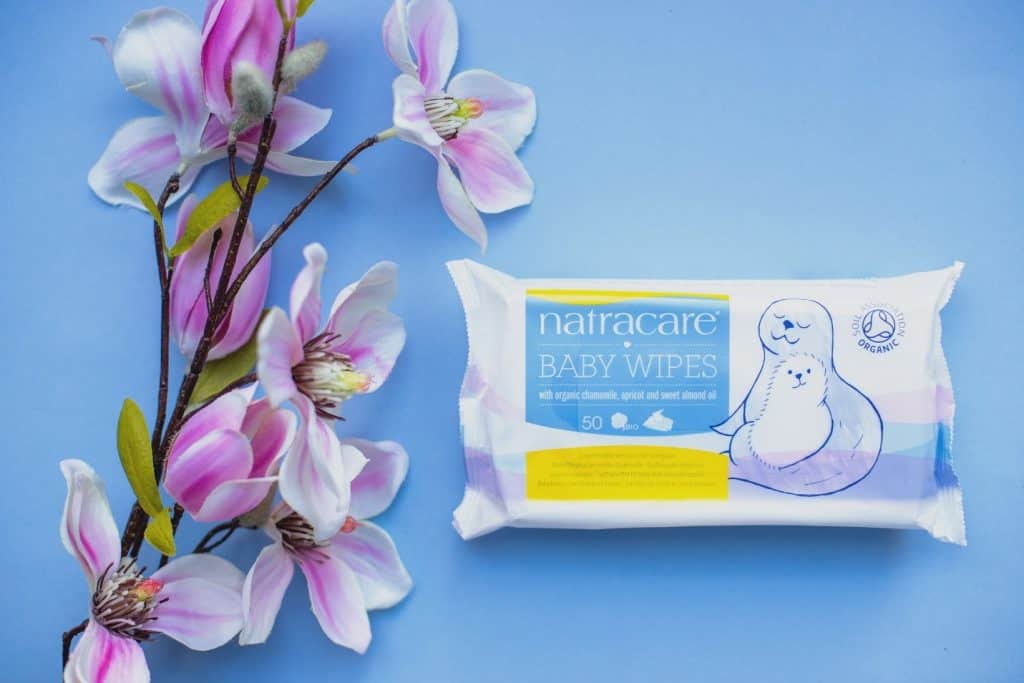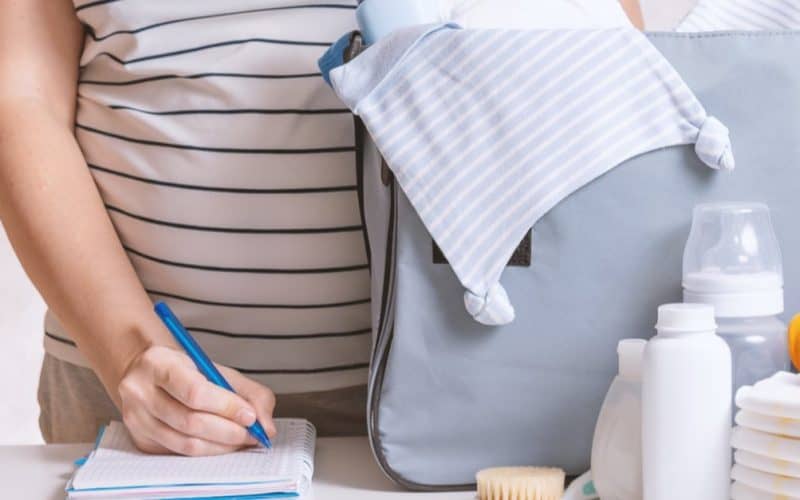Taking care of a baby is a lot of work and parents must do all they can to make their lives easier. One of the easiest ways to do so is by having a well-stocked and organized diaper caddy. Having everything needed for a diaper change within arm’s reach can save countless minutes off an already busy day.
Perhaps the three most important items to have in the diaper caddy are diapers, baby wipes, and diaper cream. It can also benefit you to have baby lotion, plastic bags, and extra clothes in there as well. To deal with a distracted baby, toys and pacifiers are also worth considering.
This article will enumerate all the necessary items you would want to put in a diaper caddy.
What to Put in Your Diaper Caddy?
1. Diapers

Understandably, the most important must-have to put in a diaper caddy are diapers. It is estimated that a baby would use about 4,600 to 4,800 diapers during the first three years. With that many diapers needed, it is imperative to have diapers on hand at all times.
When it comes to diapers, parents often have to choose between two options: cloth diapers and disposable diapers. Each comes with its own advantages and disadvantages.
Disposable diapers are convenient. They come in packs and are meant to be disposed of after use. Since they are single-use, disposable diapers do come with the disadvantage of being less economical. It would not be too surprising to spend at least $1,000 on diapers in the first year alone.
Additionally, disposable diapers have also been touted to be bad for the environment. Since these diapers are made to be waterproof, the same quality that makes them effective diapers also makes them non-biodegradable, filling up landfills for years to come.
On the other hand, cloth diapers are both economical and environmental. However, they do come at the cost of convenience. While disposable diapers are simply thrown out after use, cloth diapers have to be washed and cleaned after each diaper change. This adds more work for the parents.
2. Baby Wipes

Changing diapers means dealing with a mess. For this purpose, it is important to always have baby wipes in your diaper caddy as well.
Baby wipes are essential must-haves in your diaper caddy, as well as everywhere else in the home when you have a baby. These disposable wipes make it easy to quickly clean your baby and other surfaces – something that you will be doing often as a parent.
Cleaning the baby during a diaper change serves two main purposes. First, it keeps the baby comfortable. If pee or poop is left too long on the baby’s skin, it can lead to irritation or a rash. Hence, a good wipe is needed every time the diaper is being changed.
Second, cleaning the baby is good hygiene that can promote better health. Leftover pee or poop can also lead to bacterial infections – especially in baby girls. It is important to remember to wipe from front to back to avoid bringing poop toward the baby’s genitals.
3. Diaper Cream

Since babies wear diapers almost entirely throughout the day, the skin in contact with the diapers is also exposed to possible irritants such as pee, poop, moisture, and even the chemicals in the diapers. With such prolonged contact, it is necessary to protect the baby’s sensitive skin from these irritants.
The most common way to protect the baby’s skin is by using diaper cream. Diaper cream is also known as barrier cream as it acts as a barrier between the baby’s skin and the diaper.
It has been studied that diaper cream lowers both skin moisture as well as transepidermal water loss, parameters that can potentially promote irritation and infection.
Once the baby is wiped clean and is ready to be changed into a new diaper, diaper cream is primarily applied to the buttocks, between the butt cheeks, and around the anus. Afterward, diaper cream is also applied around the baby’s genitals.
It is also important to stock up on the appropriate types of diaper cream. There are two main types to choose from: petroleum-based and zinc-oxide-based diaper creams.
The majority of traditional diaper cream is petroleum-based, such as petroleum jelly and Aquaphor. These are excellent in terms of preventing rashes. However, these will also work effectively in treating mild rashes.
If your baby has moderate to severe skin irritation, then it is probably better to go with a zinc-oxide-based product.
4. Baby Lotion

Aside from the must-haves when it comes to changing diapers, you still have enough space in the diaper caddy to put other essentials as well. While you are changing your baby’s diaper, you might as well make sure to keep their skin hydrated by keeping a bottle of baby lotion on hand.
Mild dryness of skin may not be too detrimental, but severely dry skin can cause the baby’s skin to be irritated. As you might have already learned, babies have incredibly sensitive skin. Skin irritations can cause itchiness and discomfort that could lead to other problems down the road.
If you detect dryness in your baby’s skin as you change their diaper, you can simply reach for a bottle of baby lotion and give them a little massage, hydrating and moisturizing the skin. Some parents also prefer applying lotion after bath time as the lotion helps retain the moisture from the bath.
It is important to take note that baby lotion and regular lotion can be two very different things. Lotions marketed toward adults may have ingredients that can be too harsh for the baby’s sensitive skin. Thus, make sure to get lotion specifically formulated for babies.
5. Plastic Bags

Changing diapers means having to deal with dirty diapers. For this purpose, most parents would have a diaper pail – a special container designed to hold soiled diapers. However, there are some instances where a diaper pail is not readily available. For these times, plastic bags are especially convenient.
Unlike cribs and changing stations that are typically permanently situated in the nursery, diaper caddies are often portable, allowing parents to change diapers effectively anywhere. Having plastic bags on hand can make it easy for parents to stow away dirty diapers until a proper disposal route is available.
The great thing about plastic bags is that they are easily obtainable. You can simply collect the plastic bags that you get from shopping. If you want a more reliable source of plastic bags, you can also purchase them in stores. Other parents even use dog poop bags for dirty diapers.
6. Baby Toys

It is a parent’s dream to have their baby calm and cool throughout a diaper change. Unfortunately, that is often not the case. Babies can get fussy, antsy, and overly excited, making it extremely difficult to change their diapers. For moments like these, it is helpful to have some form of distraction.
Keeping a handful of toys in the diaper caddy is quite helpful when it comes to dealing with distracted babies. Giving them a toy can hopefully get them occupied long enough for you to change their diaper completely.
7. Pacifier

Aside from baby toys, another tool that should be kept in your arsenal is a pacifier. Determining what would help calm a baby can often be guesswork, which is why a pacifier on hand will prove to be very helpful when the baby toys fail to distract the baby.
8. Extra Clothes

Unfortunately, babies can get very messy. Parents would often find themselves changing their baby’s outfits multiple times a day. Although baby clothes should be stowed away neatly in the baby’s wardrobe, it might also be worth considering keeping a few pieces of clothing in the diaper caddy.
Depending on the baby’s age, you might want to keep certain pieces of clothing in the diaper caddy on hand. Onesies are great to keep in diaper caddies for infants and younger babies. For older babies, a shirt or two should also suffice.
9. Hand Sanitizer

Changing the baby’s diaper means getting them clean. Thus, it is also important to make sure your hands are clean as well.
It is highly recommended to have a bottle of hand sanitizer in the diaper caddy. You can then quickly sanitize your hands before and after changing the baby’s diaper. It is especially important to make sure your hands are clean since you use your hands to handle the baby.
If you must have a routine, it is recommended to clean your hands with the hand sanitizer right before and immediately after changing the diaper. Cleaning your hands before will ensure that your hands are clean as you touch the baby and the other items in the caddy.
Other Things to Put in Your Diaper Caddy
The above recommendations should be more than enough to cover your parenting needs, but it’d be a waste to leave your diaper caddy with empty space to spare.
If you check everything off but still have room for more, we’ve got another list of (non-essential) things that are worth putting in your diaper caddy to follow.
These items aren’t needed, but can offer a ton of convenience most parents will be sure to appreciate! If you’re lucky, they might even bail you out in a pinch!
- Wet bags/plastic bags (For wet messes or soiled clothes)
- Baby nail care kits (For hangnail emergencies when you’re out in public!)
- Water bottles (Can help with both cleaning and hygiene)
- Small blankets/ Nursing clothes (For breastfeeding privacy)
- Band aids
- Rubbing alcohol
- Sanitary placemats
- Spare key rings (house, car, etc.)
- Snack packs (Mind snacks that don’t travel well)
- Sunglasses (For mommy and baby)
- Sunscreen (Better safe than sorry!)
- Insect repellant
- Tissue paper (For drying purposes, which wipes can’t provide)
- Medicine for common issues (Tylenol for headaches, Antacids for acid reflux)
- Mints/Candies to munch on
- Lip balm
